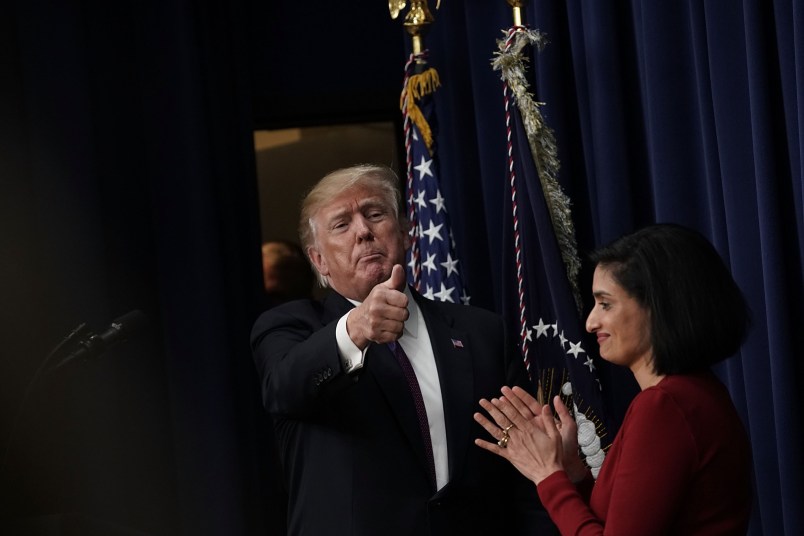Over the course of President Donald Trump’s first year in office, the number of Americans without health insurance increased 1.3 percent—with 3.2 million more people uninsured, according to Gallup-Sharecare’s latest tracking report published Tuesday.
It’s the largest one-year increase in the uninsured population since Gallup-Sharecare began the survey in 2008.
The study noted “several factors” swelling the ranks of the uninsured, from increased premiums caused by insurance companies dropping out of the individual market to uncertainty around whether the Trump administration would enforce the individual mandate’s penalty for forgoing health insurance. Exacerbating both factors, the GOP-controlled Congress repealed the individual mandate in December, which is expected to hike premiums by an additional 10 percent or more.
Premiums also went up significantly in 2017 when the Trump administration cut off cost-sharing reduction payments to insurance companies, though the vast majority of people on the individual market were shielded from the increase by a bump in their federal tax credits.
Though the uninsured rate remains well below the high of 18 percent—the year before the Affordable Care Act went into effect—the increase in 2017 is the first reversal of several years of decline. And Gallup-Sharecare predict that the trend will continue, with more people dropping or losing their insurance coverage in the years to come.

Gallup and Sharecare report that while all demographic groups saw a bump in the uninsured rate, it increased most among young adults, blacks, Hispanics and low-income Americans.
Former officials at the Department of Health and Human Services have told TPM that these are the groups for whom outreach is the most important, and the groups most likely to be impacted by the decision to cut 90 percent of the outreach budget for the first full open enrollment period of the Trump administration. The administration additionally severed partnerships with dozens of Latino advocacy groups that for years worked on outreach and enrollment, partnerships that contributed to 4 million Latinos gaining coverage since the launch of the Affordable Care Act.
Most troublingly, the uninsured rate among Americans younger than 25 jumped the most, a full 2 percent, making the overall insurance pool older and more expensive for those who remain. When the individual mandate is fully repealed in 2019, even more younger and healthier enrollees are expected to drop out, putting the future stability of the health insurance exchanges at risk.







"Over the course of President Donald Trump’s first year in office, the number of Americans without health insurance increased 1.3 percent…"
And that’s just the beginning. Paul Ryan must be so pleased.
Those 3.2 million are more likely to suffer and/or die now because of it. The rest of us, are more likely to pay more to cover for them because of it. This is what happens when the GOP is put in charge of gov’t, everyday life become more costly, both financially and for one’s health.
Oh boy, Donnie will be so pleased! His uninsured population numbers are higher than Obama’s!! And they’re gonna just keep going up!!!
So much winning!!!
Meanwhile, nearly all of the rest of THE WORLD covers ALL it’s people.
And Donald’s approval rating has risen to 39.3 (low was 36.4), that tax cut sure is popular…